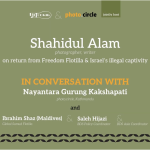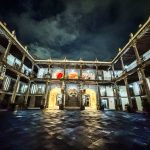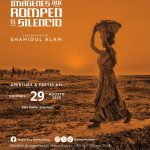

-
-
-
-
-
-
-
Bangladesh 1971
From the Drik Agency Archive Public event???By?BRISBANE POWERHOUSE 7 November?at?09:00?until?3…
-
Grant for Exhibition in Tokyo
REMINDERS PHOTOGRAPHY STRONGHOLD GRANT Upon receiving you proposal our commissioned…
-
The Majority World Photo Agency and The Guardian partner for Insider, Outsider? in London
Photo Show ? The Majority World Photo Agency and The…
-
Insider, Outsider?
Photography that challenges perceptions of the developing world ‘Insider, Outsider??…
-
-
Majority World exhibition at Guardian Gallery in London
Exhibition open from 3rd July 2012 to 22nd July 2012…
-
-
-
-
-
Bangladeshi photojournalist Shahidul Alam?s first UK retrospective ? picture feast
From Art Radar Journal BANGLADESH PHOTOGRAPHY LONDON GALLERY SHOW The…
-
-
-
Chobi Mela VI: Debasish Shom: Redefining Space
Subscribe to ShahidulNews From the Exhibition Dhaka My Dreams, My…
-
-
Latest Posts
Categories
- 1971
- Afghanistan
- Arts
- Bangladesh
- Capitalism
- Caretaker government
- Censorship
- China
- Chittagong Hill Tracts
- Chobi Mela
- Chobi Mela VII
- Coal
- Colonialism
- Consortium government
- Corruption
- COVID 19
- Crossfire
- culture
- Current News Photos
- Democracy
- development
- Disappearances
- disasters
- Drik and its initiatives
- Drik DNA
- Drik's Network Partners
- Drugs
- economy
- Education
- Elections
- Energy
- environment
- exploitation
- features
- Film
- Garments
- Gas
- Gender
- Genocide
- Global Issues
- Governance
- guimet
- Health
- History
- Human rights
- Humour
- Immigration
- Imperialism
- India
- Interesting sites
- Interviews
- Interviews and Features
- Islam
- Kalpana Chakma
- Killings
- Law
- lectures
- literature
- Major Features on Bangladesh
- Majority World
- media
- Media issues
- Migration
- Military
- mining
- Mir Jafar
- Monarchy
- Music
- My Photo Essays
- Nepal
- New Age
- New Media
- News Archives
- News Photo Archives
- Nuclear
- Occupation
- Oil
- Pakistan
- Partition
- Pathshala
- People
- Personal
- Photography
- Photojournalism
- Photojournalism issues
- photojournalist
- politics
- Poverty
- RAB
- Rahnuma Ahmed
- Religion
- Resistance
- Reviews
- Science
- security
- Shahidul Alam
- Sheikh Hasina
- short stories
- Sites of Drik and Pathshala photographers
- South Asia
- Southern Exposure
- Sports
- Sri Lanka
- surveillance
- Taliban
- Technology
- Terrorism
- Transport
- UK
- Uncategorized
- USA
- Violence
- War
- war on terror
- Water
- World
Tags
1971 Art Arts Bangladesh book censorship Chobi Mela Chobi Mela VII culture Death democracy Dhaka Drik education Elections exhibition Festival garments Gaza Genocide Governance history Human rights India Israel Journalism Law literature Majority World media Military Pakistan Palestine Pathshala Photography Photojournalism politics Rahnuma Ahmed resistance Shahidul Alam USA Violence Visual Arts War War Crimes



